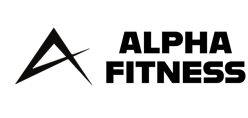10 Workouts That Will Help You Build Muscle: Unlock Your Strength Potential
2/14/20255 min read


Understanding Muscle Building
Muscle building, commonly referred to as hypertrophy, is a complex physiological process that leads to the increase in muscle mass and strength. This phenomenon occurs when the muscles experience stress, typically through resistance training, which leads to microscopic damage to the muscle fibers. In response to this damage, the body initiates a repair process whereby the fibers not only heal but also become thicker and stronger, adapting to handle future physical challenges.
A key component in achieving hypertrophy is the principle of progressive overload. This concept involves gradually increasing the weight, frequency, or intensity of the exercises performed. By continually challenging the muscles, they are compelled to adapt, which accelerates growth and strength gains. Incorporating progressive overload into a workout routine is crucial for those seeking to optimize their muscle-building endeavors.
Nutrition also plays a vital role in the muscle-building process. Adequate protein intake is particularly important, as proteins serve as the building blocks for muscle repair and growth. Consuming a balanced diet that includes an appropriate amount of carbohydrates and fats will also support energy levels and overall recovery. Proper hydration should not be overlooked, as it is essential for optimal muscle function and performance during workouts.
Recovery is equally important when it comes to muscle growth. Allowing adequate time for the muscles to recuperate through rest and sleep can significantly influence the overall effectiveness of a training program. During this recovery period, the body synthesizes new muscle proteins, effectively enhancing strength and size. An understanding of these elements—hypertrophy, the importance of resistance training, nutrition, and recovery—is crucial for anyone looking to build muscle and unlock their strength potential.
The Top 10 Muscle-Building Workouts
Building muscle effectively requires a strategic approach to your workout regimen. The following are the top ten workouts specifically designed to enhance muscle growth, targeting various muscle groups through different techniques including free weights, compound movements, and bodyweight exercises.
1. Squats: One of the most effective lower body exercises, squats target the quadriceps, hamstrings, and glutes. Aim for 3-4 sets of 8-12 reps. Ensure proper form by keeping your chest up and knees aligned with your toes.
2. Deadlifts: This compound movement engages the entire posterior chain, including the back, glutes, and hamstrings. Recommended sets are 3-5 with 6-10 reps. Focus on maintaining a neutral spine to prevent injury.
3. Bench Press: Targeting the chest, shoulders, and triceps, the bench press is a staple in muscle-building routines. Perform 3-4 sets of 6-10 reps, using a spotter for safety during heavier lifts.
4. Pull-Ups: A fantastic bodyweight exercise for upper body strength, pull-ups target the back and biceps. Start with 3 sets of as many reps as possible, using assistance bands if necessary.
5. Overhead Press: This movement primarily focuses on the shoulders and triceps. Execute 3-4 sets of 6-10 reps, keeping your core tight and avoiding arching your back.
6. Bent-over Rows: Engaging the back, biceps, and shoulders, this exercise can be performed with free weights or a barbell. Aim for 3-4 sets of 8-12 reps, ensuring a flat back throughout the movement.
7. Lunges: Targeting the quads, glutes, and hamstrings, lunges are a versatile exercise. Perform walking lunges for 3-4 sets of 10-15 reps per leg to add variety.
8. Dips: Focusing on the chest and triceps, dips require parallel bars. Start with 3 sets of 6-10 reps, and lean slightly forward to maximize chest activation.
9. Leg Press: An excellent alternative to squats, the leg press machine emphasizes the quadriceps and glutes. Use 3-4 sets of 8-12 reps and ensure your knees do not extend beyond your toes.
10. Planks: While primarily a core exercise, planks also engage many stabilizing muscles. Challenge yourself with sets of 30-60 seconds, focusing on maintaining a straight line from head to heels.
Incorporating these workouts into your training routine will help build muscle effectively and enhance overall strength. Proper form and consistency are key to achieving optimal results.
The Benefits of Each Workout
Understanding the benefits of various workouts is essential for anyone looking to build muscle effectively. Each exercise offers unique contributions to muscle growth, strength enhancement, and overall functional fitness. For instance, compound movements such as squats and deadlifts are known for their ability to engage multiple muscle groups simultaneously. This leads to improved strength and stability, along with increased muscle hypertrophy due to the overall stress placed on the body during these lifts.
Isolation exercises, like bicep curls and tricep extensions, allow for targeted muscle training. By focusing on specific muscle groups, these workouts can enhance muscle definition and address any imbalances that may exist. Moreover, incorporating a variety of workouts can lead to a well-rounded physique and functional strength that translates into improved performance in daily activities.
Accessibility is another vital aspect of choosing workouts for muscle building. Many exercises, such as push-ups and lunges, require minimal equipment and can be performed in various settings, including home or gym environments. This flexibility allows individuals to maintain consistency in their training, which is crucial for muscle growth and recovery.
Progressive overload, a principle essential for muscle building, can be effectively applied across all workouts. This approach encourages lifters to gradually increase either the weight lifted or the number of repetitions performed over time, promoting continuous adaptations within muscle fibers. Each exercise allows for this iterative challenge to ensure that the muscles are consistently being worked beyond their current capacities.
By considering the unique features of each workout and their benefits, individuals can design effective training programs tailored to their specific goals and fitness levels. Consequently, adopting a comprehensive workout strategy not only enhances muscle growth but also contributes to overall strength and functional fitness.
Creating Your Personalized Workout Plan
Developing a personalized workout plan is essential for effectively building muscle and achieving individual fitness goals. To start, assess your current fitness level and set clear, achievable objectives. Whether your aim is hypertrophy, strength, or endurance, this foundation will guide the structure of your training regimen.
Once your goals are established, begin by incorporating the workouts previously outlined, ensuring that each session includes a balanced mix of compound and isolation exercises. Compound exercises, such as squats and deadlifts, engage multiple muscle groups efficiently, whereas isolation exercises focus on specific muscles, allowing for targeted strength development.
It is crucial to structure your workout schedule to include variations of the listed exercises, enabling progressive overload. This principle involves gradually increasing the weight, intensity, or volume of your workouts, which is vital for muscle growth. A typical plan could include four to six training sessions per week, each focusing on different muscle groups. For instance, you may dedicate one day to upper body workouts, another to lower body exercises, and incorporate full-body workouts to promote overall strength.
Rest and recovery periods must not be overlooked. Giving muscles adequate time to recover is essential to prevent fatigue and injury. Generally, aim for 48 hours of rest for each muscle group before targeting them again. Active recovery techniques, such as stretching or light aerobic activity, can also enhance blood flow and muscle recovery.
Tracking your progress is imperative. Maintain a workout journal to document exercises, weights lifted, and repetitions. Additionally, consider integrating nutrition and supplements into your regimen to further support muscle building. Consuming a balanced diet rich in protein, healthy fats, and carbohydrates will fuel muscle growth, while specific supplements, such as protein powders or creatine, may also be beneficial. Ultimately, a tailored workout plan will maximize your muscle-building potential and enhance overall fitness outcomes.


